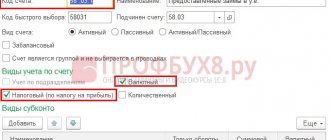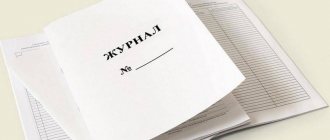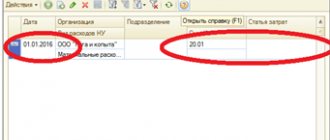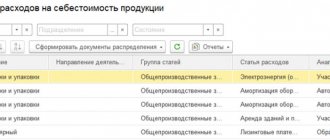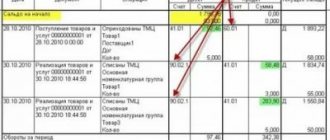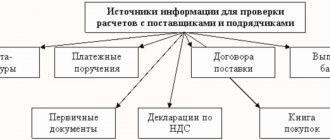Anything that affects the property or financial position of an organization is a business transaction. One way or another, all events or transactions affect accounting, and therefore the balance sheet. For ease of systematization, there are 4 types of business transactions. This article will tell you what these types are and how they differ from each other.
Obviously, since the balance sheet consists of the assets and liabilities of the organization, then all the events of economic activity that occur affect these indicators. However, some business transactions may have a greater impact on the asset, while others may have a greater impact on the liability, and vice versa. The types of business transactions in accounting depend on how they affect the balance sheet: more on its active part, on the passive part, or on both at the same time. Let's look at this issue in more detail.
General concepts of business transactions
A business operation consists of a certain action that reflects data on calculations, changes in the composition of equity, and the sources of their formation. Based on it, the accountant draws up an entry. The operation is recognized as completed only if there are supporting documents.
Each economic action will change either the size of the property, or the size and composition of the sources of its formation, or two indicators simultaneously. Their decrease or increase equally affects the total amount of assets and liabilities of the balance sheet.
Examples of household items operations
Here are some examples of business transactions in accounting:
- First type:
- D43 – K20 – release of finished goods from production.
- D94 – K10 – a shortage of valuables was identified during the inventory.
- Second type:
- D80 – K84 – the size of the capital decreased to the size of the company’s net assets.
- D96 – K70 – accrual of vacation pay from the reserve.
- Third type:
- D76 - K91 - charging a fine for violating the conditions specified in the contract.
- D08 – K70 – calculation of wages for workers installing an OS facility.
- Fourth type:
- D91 – K52 – negative difference in exchange rates for a foreign account. currency.
- D91 – K63 – formation of a reserve for doubtful debts.
Main stages of the organization's work
In the course of the enterprise’s activities, 3 processes can be distinguished, which are taken into account by separate operations: (click to expand)
- Supply - takes into account the receipt of goods and materials from third-party companies, repayment of transport and procurement costs.
- Production - inventory items are released into production, wages and taxes are calculated.
- Sales - the revenue received from the sale of goods (provision of services) to counterparties is recorded, the corresponding costs are written off, and profit is determined.
The organization's assets are constantly involved in the production process. To determine their value and economic analysis for a specific date, the accountant draws up a balance sheet. It includes a system of parameters that qualify the financial status of the company, the condition and size of its assets and sources in the same monetary equivalent.
Examples of active-passive operations
Third type. The warehouse received materials from the supplier in the amount of 320 thousand rubles. for an unpaid invoice. The operation affects the asset and liability:
- materials in the warehouse increase: KT10 +320 thousand rubles.
- accounting of settlements with suppliers and contractors: KT60 +320 thousand rubles.
Wiring: DT10 KT60 – 320 thousand rubles.
The balance before the transaction is presented in the table below.
| Assets | Thousand rub. | Passive | Thousand rub. |
| OS | 40 | UK | 150 |
| Materials | 14 | Settlements with creditors | 40 |
| Cash register | 17 | Debt to the budget | 10 |
| Checking account | 150 | Wage arrears | 36 |
| Settlements with debtors | 19 | Bank loans | 4 |
| TOTAL | 240 | TOTAL | 240 |
The balance after the transaction is presented in the table below.
| Assets | Thousand rub. | Passive | Thousand rub. |
| OS | 40 | UK | 150 |
| Materials | 334 | Settlements with creditors | 360 |
| Cash register | 167 | Debt to the budget | 30 |
| Checking account | 0 | Wage arrears | 16 |
| Settlements with debtors | 19 | Bank loans | 4 |
| TOTAL | 560 | TOTAL | 560 |
Fourth type. The organization repaid the debt to the supplier in the amount of 500 thousand rubles. The operation affects the asset and liability:
- accounting of settlements with suppliers and contractors: DT60 -500 thousand rubles.
- the amount of funds in the bank account decreases: DT51 -500 thousand rubles.
Wiring: DT60 KT51 – 500 thousand rubles.
The balance before the transaction is presented in the table below.
| Assets | Thousand rub. | Passive | Thousand rub. |
| OS | 40 | UK | 150 |
| Materials | 14 | Settlements with creditors | 540 |
| Cash register | 17 | Debt to the budget | 10 |
| Checking account | 650 | Wage arrears | 36 |
| Settlements with debtors | 19 | Bank loans | 4 |
| TOTAL | 740 | TOTAL | 740 |
The balance after the transaction is presented in the table below.
| Assets | Thousand rub. | Passive | Thousand rub. |
| OS | 40 | UK | 150 |
| Materials | 14 | Settlements with creditors | 40 |
| Cash register | 17 | Debt to the budget | 10 |
| Checking account | 150 | Wage arrears | 36 |
| Settlements with debtors | 19 | Bank loans | 4 |
| TOTAL | 240 | TOTAL | 240 |
In all of the above cases, the changes are equal. The balance currency is adjusted by the same amount.
Types of accounting transactions
Depending on the interaction of assets and sources, there are 4 types of operations.
- Active - affect the composition of funds, i.e., the balance sheet asset, without affecting the results. These include actions to use inventory items, liquidate accounts receivable, receive money from a bank account to the cash desk, issue money on account, etc.
The first type of change is reflected by the formula:
A + ΔI – ΔI = P, where
A - balance sheet asset;
P - passive;
ΔИ - change in property due to economic action.
- Passive operations affect the sources of formation of assets, i.e., the liability side of the balance sheet. The result is constant. Such operations include: deductions from earnings, the formation of reserves or the accrual of dividends from profits for distribution, replenishment of the authorized capital from additional funds, etc.
This type of operation can be reflected as follows:
A = P + ΔI – ΔI.
- Active-passive increasing - increase the asset, liability and currency by an identical amount. These include: repayment of debt on deposits in the authorized capital, accrual of depreciation of fixed assets, advances from buyers, receipt of borrowed funds, etc.
This type of operation looks like this:
A + ΔI = P + ΔI.
- Active-passive decreasing - reduce the asset, liability and balance sheet total by the same amount. This is the payment of earnings, payment of debts to creditors.
A – ΔI = P – ΔI.
Example 1. Type 4 operation
Based on bills and bank statements, 214 thousand rubles were transferred to the supplier. for the materials received. The result of the operation will be a change in two items: the asset account will decrease. 51 by 214 thousand rubles, in liabilities the account will decrease. 62 for 214 thousand rubles. The asset and liability totals changed by an equal amount. The balance identity is preserved.
Consideration of four types of business transactions led to the following conclusions:
- Each fact of activity is reflected in at least two balance sheet items;
- Changes to the asset (types 1, 2) do not change the currency of the document;
- Changes in assets and liabilities (types 3, 4) change the currency by the same amount;
- Any operations maintain equality of balance sheet totals.
Table. Examples of postings by type of operation.
| Content | Debit | deviation | Credit | deviation |
| Type 1. | ||||
| Raw materials transferred to production | 20 | + | 10 | — |
| Payment received from buyer | 51 | + | 60 | — |
| Received money in cash | 50 | + | 51 | — |
| Type 2. | ||||
| Personal income tax withheld from salary | 70 | — | 68 | + |
| The reserve is replenished from profits to be distributed | 84 | — | 82 | + |
| Advance paid to supplier using borrowed funds | 60 | — | 66 | + |
| Type 3. | ||||
| Received materials from supplier | 10 | + | 60 | + |
| Salary accrued | 20 | + | 70 | + |
| The loan amount has been credited to the account | 51 | + | 66 | + |
| Type 4. | ||||
| Loan repaid | 66 | — | 51 | — |
| Employees' salaries transferred | 70 | — | 51 | — |
| Payment has been made to the supplier for the goods | 51 | — | 60 | — |
Transactions affecting the value of the balance sheet currency
The term BALANCE is of Latin origin. Literally: bis - twice, lanz - scales, i.e. double scales as a symbol of balance [2].
The balance sheet reflects the assets of the enterprise in two aspects: on the one hand, according to their composition and functional role, on the other hand, according to the sources of formation and intended purpose.
All property is grouped and summarized in the balance sheet in a single monetary measure. In order to show the state of assets, the balance sheet is compiled at a certain point, usually on the first day of the month (quarter). Since the balance sheet only shows the state of assets, the balance sheet does not characterize the movement and use of funds. These matches are obtained from current accounting data.
However, indicators about the state of property and its sources, grouped in a certain order and contained in the balance sheet, are very important for making the right management decisions.
Thus, the balance sheet is a way of grouping and summarizing property in monetary terms as of a certain date [4].
The two-sided balance sheet graphically shows:
- on the left side, the state of the property in the sequence of the corresponding functional role of its components, based on the degree of liquidity and the nature of the participation of economic assets in the reproduction process - this is a balance sheet asset
(from Latin aktivus - active).
- sources of property are reflected on the right side of the balance sheet - liabilities (
passivus - passive, opposite to active). Liability shows the equity capital, as well as the totality of debts and obligations of an economic entity in order of increasing withdrawal of funds.
Each individual type of funds in an asset or liability is called a balance sheet item; certain balance sheet items are combined into sections. The total of the balance sheet asset at the beginning of the year and the end of the reporting period is equal to the total of its liability.
The total value of the balance sheet is called the balance sheet currency [
5].
How to determine the type of operation?
To understand which of the four types discussed above a transaction belongs to, you need to determine which accounts are involved in the posting and what happens to the balance sheet currency.
| Type of transaction | Corresponding accounts | Changes in Debit and Credit values | Balance sheet |
| Active | Both active | Dt increases, Kt decreases | Doesn't change |
| Passive | Both are passive | Dt decreases, Kt increases | |
| Mixed to increase | Dt - active, Kt - passive | Dt and Kt increase | Increases |
| Mixed on decline | Dt - passive, Kt - active | Dt and Kt decrease | Decreases |
To have a good understanding of the types of accounts, you need to know their layout and balance sheet design. An asset refers to the company's property, and a liability refers to sources. There are mixed type accounts that can be present in both the assets of the balance sheet and the liabilities. It depends on the state of the settlements. These include: 40, 60, 62, 68, 69, 71, 73, 75, 76, 79, 84, 90, 91, 99.
Primary documentation for recording
With the help of this documentation, you can certify the fact of the accomplishment of the chemical act and ensure the reliability of your employees. Some types of primary documents are unified, others are created by payers personally.
Primary documentation, reflecting the implementation of the economic organization and being the basis for creating accounting entries, can be generated both by the accounting service and by management, middle managers, and so on. These documents must contain certain information:
- Name
- signatures of officials
- information about the responsible employee
- deal name
- information about business entities involved in the transaction
- information about the entity of the enterprise
- date of registration of documentation
When preparing documentation, it is possible to make necessary amendments to the unified forms. But there are exceptions, for example, cash documents.
Thus, all financial entities in accounting must be accompanied by postings, which are the basis for reporting. The latter, in turn, allows you to analyze the financial results of the company. In addition, it contributes to the development of correct management decisions.
Top
Write your question in the form below
Features of reflecting accounting entries
Each production action must be documented. Changes arising from the operation are of a dual nature and occur in two interrelated accounting objects. A characteristic feature of the operation is that it is shown on the accounts twice: in debit and credit. This relationship represents the correspondence of accounts.
Transactions are reflected on accounts at the time of their occurrence, i.e., as they are completed. Double entry reveals the opposite nature of the asset and liability accounts, linking them to the form of the balance sheet. On the left they reflect the balances of the property (debit), on the right - the sources of its appearance (credit).
Correspondent accounts and balance form a single system, connected by double entry, which is based on three principles: (click to expand)
- Duality of reflection;
- Fixation of amounts for Dt and Ct accounts;
- In both accounts, changes are shown in the same amount.
For control, the registration of the action in accounting is repeated twice. First of all, it is reflected as a fait accompli confirmed by documents, then - by the distribution of amounts among correspondent accounts.
Example 2. Posting
Contents of the operation: materials worth 85 thousand rubles were received from the supplier.
Reasoning:
The changes affected two accounts: account. 10 — balances of inventory items and invoices increased. 60 - the debt to the supplier has increased.
Account 10 - active, takes into account assets, growth is put in Dt;
Account 60 - passive, height - according to Kt.
The increase in assets and liabilities corresponds to operations of the third type. The posting is written as follows: Dt 10 Kt 60.
Reflection of business transactions on accounting accounts
After the primary documents are collected and verified, they are recorded in the accounting accounts in chronological order. Each event of financial and economic activity has a dual character. The essence of this duality comes down to the fact that when recording one event, 2 accounting accounts are used, which indicate the composition, location of the property and the sources of its formation.
How to correctly reflect business transactions using double entries, read the article “The Concept and Essence of Double Entry in Accounting.”
The connection between these accounts is called correspondence, and the accounts themselves are called correspondent accounts.
Reflection of transactions using correspondence accounts is called accounting entry.
For more information about what kinds of postings there are, read the article “Basic accounting postings - examples.”
We also recommend the reference book “16,700 ACCOUNTING ENTRY WITH COMMENTS,” which you will find in ConsultantPlus if you get free trial access to the system.
Documentary evidence of records
Entries in accounts are made according to documents, so all papers received by the accountant are subject to processing. Documents are established for homogeneous groups of operations. For each action, they create correspondence accounts. The text indicating the correspondence and amount is called a posting. It is compiled directly on the document, in a statement, or in a special journal.
To facilitate data entry, each account is assigned a number. The control function of double entry of information is to check the equality of debit and credit turnover for the period. Inequality indicates the presence of an error in the wiring. The cognitive function of double registration is that it is easy to formulate the content of the operation using correspondent accounts.
Example 3. Formulation of the contents of correspondent accounts
The entry is given: Dt 69 Kt 51 in the amount of 15,300 rubles.
Explanation:
Dt sch. 69 - passive, a decrease in the sources of the company’s funds is recorded;
Kt sch. 51 - active, the cost of funds is decreasing.
The values in these accounts decrease, which means that the operation belongs to the fourth type.
The content of the posting will be as follows: “reflects the transfer of funds to extra-budgetary funds in the amount of 15,300 rubles.”
Examples of passive operations
Personal income tax was withheld from wages in the amount of 20 thousand rubles. This business operation leads to a reduction in the enterprise’s debt to personnel (KT68). At the same time, the debt to the budget increases (DT70). Wiring: DT70 KT68 – 20 thousand rubles.
The balance before the transaction is presented in the table below.
| Assets | Thousand rub. | Passive | Thousand rub. |
| OS | 40 | UK | 150 |
| Materials | 14 | Settlements with creditors | 40 |
| Cash register | 17 | Debt to the budget | 10 |
| Checking account | 150 | Wage arrears | 36 |
| Settlements with debtors | 19 | Bank loans | 4 |
| TOTAL | 240 | TOTAL | 240 |
The balance after the transaction is presented in the table below.
| Assets | Thousand rub. | Passive | Thousand rub. |
| OS | 40 | UK | 150 |
| Materials | 14 | Settlements with creditors | 40 |
| Cash register | 167 | Debt to the budget | 30 |
| Checking account | 0 | Wage arrears | 16 |
| Settlements with debtors | 19 | Bank loans | 4 |
| TOTAL | 240 | TOTAL | 240 |
Basic balance postings
Postings for some business activities are presented in the table.
| Debit | Credit | Content |
| Wage | ||
| 20 (25) | 70 | Salaries accrued to the main workers (administration) |
| 70 | 68 | Personal income tax withheld from employees' earnings |
| 76 | Child support withheld from salary | |
| 50, 51 | Salary paid | |
| 20 (25) | 69 | Contributions to extra-budgetary funds accrued |
| 68, (69) | 51 | Personal income tax (insurance contributions) transferred |
| Cash desk and bank | ||
| 50 | 51, (52) | Money has been received from the account to the cashier |
| 62 | Advance received from buyer | |
| 70 | Refund of excess amounts paid for salaries | |
| 71 | Return of the balance of accountable money | |
| 75 | Contribution to the authorized capital has been received | |
| 70 | 50 | Salary paid |
| 71 | Money was issued for reporting | |
| 94 | The lack of money in the cash register has been taken into account | |
| 73 | A loan was issued to an employee | |
| 51 | Proceeds handed over to the bank | |
| 51 | 62, (76) | Paid for goods by buyer (debtor) |
| 66, 67 | Loan received | |
| 75 | 51 | Dividends paid |
| 60 | Money was transferred to the supplier for the goods | |
| 66, 67 | Loan interest paid off | |
| 81 | Shares purchased | |
| 91.2 | Payment to the bank for cash management services | |
| Fixed assets (FPE) and intangible assets (IMA) | ||
| 08 | 60, 71, 75, 76 | Received OS (intangible assets) |
| 01, (04) | 08 | Assets were accepted for accounting (intangible assets were put into operation) |
| 20, 23, 25, 26, 44 | 02, (05) | Accrued depreciation on fixed assets (intangible assets) |
| Inventories | ||
| 10, (11) | 60, 75, 76 | Received MPZ (animals) |
| 20, 23, 29 | Production waste has arrived | |
| 20, 23, 25, 26, 44 | 10 | MPZ written off |
| 90, 91 | MPZ sold | |
| 08 | 11 | Young cattle were transferred to the main herd |
| 20, 23, 29 | Costs of slaughtering animals are taken into account | |
| Expenses | ||
| 20 | 23, 25, 26, (28) | The costs of other production (losses from defects) are distributed among the main products |
| 21 | Own semi-finished products were released into production for processing | |
| 20, 23, 25, 26, 44 | 60, 76 | Works (services) of third-party organizations are reflected |
| 68, 69, 70 | Taxes and salaries accrued | |
| 21 | 20 | Semi-finished products (own) are taken into account |
| 90 | 44 | Sales expenses are written off to the cost of products sold |
| Calculations | ||
| 62 | 90 | Products sold |
| 20, 25, 44 | 66, 67 | Interest accrued on the loan |
| 10, 20, 41 | 71 | Accountable amount spent |
| 73 | 94 | The shortage is attributed to the culprit |
| 75 | 80 | Authorized fund accrued |
| 10, 51, 50,11, 41 | 75 | Funds contributed to the contribution to the authorized capital |
| Capital | ||
| 81 | 50, 51 | Securities purchased |
| 84, 75 | 82 | The reserve fund has been replenished |
| 82 | 84 | Losses are covered using reserve capital funds |
| 75 | 83 | Increased price of securities |
| 75 | 80 | Authorized fund accrued |
| 83 | 75 | Additional capital is distributed among the participants of the JSC |
| 50, 51 | 86 | Special-purpose financing |
| Financial results | ||
| 90 | 10, 21, 41, 43 | The cost of inventory items is written off |
| 62 | 90 | Sales revenue taken into account |
| 90 | 68 | VAT charged on products sold |
| 20, (44) | Actual sales expenses are written off (cost of sales) | |
| 99 | Sales profit taken into account | |
| 40 | The deviation of the actual cost from the planned cost is reflected | |
| 99 | 90 | Loss on sales by main activities |
| 91.2 | 10 | Spare parts written off for repairs |
| 03 | The value of property leased is written off | |
| 20 | Main production services written off | |
| 94 | Shortage written off (no culprit) | |
| 99 | Profit from sales written off | |
| 99 | 91.2 | Other expenses written off at the end of the year |
| 10 | Spare parts from car disassembly are taken into account | |
| 20, 23, 91 | 96 | A reserve has been created for future expenses |
| 99 | 68 | Profit tax accrued |
| 84 | 99 | Uncovered loss identified |
| 99 | 84 | The final result of the work is reflected - profit |
Examples of active operations
The cash desk received funds in the amount of 150 thousand rubles from the current account. As a result of this operation, the balance in the bank account (KT51) decreases and the balance in the cash register increases (DT50). Accounting entries for business transactions: DT50 KT51 – 150 thousand rubles.
The balance before the transaction is presented in the table below.
| Assets | Thousand rub. | Passive | Thousand rub. |
| OS | 40 | UK | 150 |
| Materials | 14 | Settlements with creditors | 40 |
| Cash register | 17 | Debt to the budget | 10 |
| Checking account | 150 | Wage arrears | 36 |
| Settlements with debtors | 19 | Bank loans | 4 |
| TOTAL | 240 | TOTAL | 240 |
The balance after the transaction is presented in the table below.
| Assets | Thousand rub. | Passive | Thousand rub. |
| OS | 40 | UK | 150 |
| Materials | 14 | Settlements with creditors | 40 |
| Cash register | 167 | Debt to the budget | 10 |
| Checking account | 0 | Wage arrears | 36 |
| Settlements with debtors | 19 | Bank loans | 4 |
| TOTAL | 240 | TOTAL | 240 |
The importance of balance
It is important to comply with all of the above requirements when drawing up a balance sheet. It clearly reflects the financial condition of the organization, shows who invested the funds, how they were allocated and how the loans were secured. By analyzing the balance sheet over several periods, you can imagine the dynamics of the organization’s development and determine whether resources are being used rationally. The presence of a correctly compiled report allows the manager to think about all the consequences of the organization’s activities, consciously manage the economy, and search for internal reserves.
As a reporting document, the balance sheet contains important information. The organization reports to them to governing bodies, tax administration, statistics, and credit institutions. Based on the information in the balance sheet and other reporting forms, the net profit indicator is calculated, the amount of taxes, mandatory contributions and payments is established.
The balance sheet in scientific research is a summary of accurate, systematized data on the property status, economic activity, statics and dynamics of individual farms. Without a comprehensive study and careful study of such reports, it is impossible to practically work out effective ways to develop and boost the economy of the country in general and a specific organization in particular.

